Alternative Spinach Greens
Spinach is either loved or hated, there doesn’t seem to be much middle ground. This is probably the result of either being subjected to slimy canned spinach as a child, or having escaped those trials at the dining table.
The good news is that love of spinach can be learned, especially when that spinach is freshly grown from your own garden, picked only minutes before showing up in a salad, sandwich or other dish.
Several visitors to our garden have proclaimed that they don’t like spinach, all the while munching on a few fresh leaves of the hated green.We have learned not to announce what we are handing out to be tasted, letting them try and taste before discussing it. More than one has been very pleasantly surprised to hear that they actually do like spinach, when it is fresh.
What many don’t know is that spinach is a cool season crop, but for most of the country that means it can be grown twice a growing season, as an early spring green and then again as a fall and winter crop, planted at the end of the summer and enjoyed well into the colder seasons. Some gardeners will enjoy their fresh spinach past Thanksgiving and almost until Christmas, even in the northern states with a cold frame, row cover or hoop house.
The downside is that spinach becomes bitter rapidly when the temperatures are above about 80°F, but that is where the spinach alternatives arrive to rescue the summer salads. None of them are true spinach, but they are all heat loving, deliciously crunchy greens that can be enjoyed during hot weather.
Ellen contributes another article from her internship, giving us her take on these greens!
One of my favorite fall vegetables is spinach. The hearty, meaty leaves come as a welcome contrast to everything that is typically getting ready for winter at this time. Spinach that is planted in the fall will grow for a few weeks in the springtime, giving two harvests off of one planting!
We are used to seeing lettuce and salad greens all year in the supermarket. The reality is that salad downright prefers to grow in cool weather. Much of the supermarket lettuce is grown in artificial conditions or in climates that are cool year round. When I was in New Mexico, I ran an acre kitchen garden for Real Food Nation, a farm-to-table style café. One of our main crops was lettuce, for salads. While it is possible to grow salad greens in the heat of July, it takes a little coaxing, and in the arid high altitude desert, a little too much water for my conscience. I prefer to grow lettuce in spring and again in fall, when it really wants to grow. The heads that come off these plantings are always stunning.How many of you have planted lettuce, or spinach, in the summer time, and noticed the leaves remain stunted, or wilt, or even start growing pointed leaves? When temperatures get warm enough, cool weather greens begin to exhibit physiological changes. They are getting ready to send up a seed stalk, bolt, and produce seed. It can be frustrating to tend to a planting only to miss out on eating any of it.
But it is also a good reminder from Nature to plant – and eat – within season. Lots of people would like to grow lettuce all summer and to eat fresh spinach all year long. In some places this is possible, but in most climates this is not the case. However, just because we can’t grow lettuce in the summer doesn’t mean we have to stop eating salad in the summer! I’ve put together this list of heat-loving greens to try planting for summer greens. Each plant is adapted to growing in hot climates and are steady producing greens through the hot season.
Malabar spinach, New Zealand spinach, amaranth, and huauzontle, or Red Aztec spinach are all plants to try. Below is a brief introduction to each and planting directions and tips can be found elsewhere on the website.
Red Aztec Spinach (Huauzontle, or Chenepodium berlandieri): This ‘spinach’ was widely cultivated all over the Americas by Native Americans as a vegetable. In the Andes it has been cultivated for 5,000 years and is now known for the food seeds it produces, quinoa. Red Aztec is used as a green that is heat tolerant and drought-resistant. The lower leaves turn bright red as they mature and hold their color in cooking (only 30-60 seconds in boiling water). Seed-heads can be stir-fried and the seeds can be used for red tortillas or for sprouting. In New Mexico, the young green leaves of wild huauazontle are eaten widely in the summer, when the plants grow best.
Malabar Spinach (Basella rubris): This vining plant from India does best in hot and humid climates and provides a summer supply of cooking and raw greens. There are two cultivars of Malabar spinach, one is red-vined and the other green with deep, shiny leaves. Parts of the red veined variety of Malabar spinach is used as ink and as a potent dye. The plants leaves have a slight mucilaginous texture, which is remediated by using a salad dressing with vinegar.
Amaranth (Amaranthus hybridus): One of my favorite greens to grow–and not always green! The oval, decorative looking leaves of this plant are anywhere from deep fushia to light green with white and pink centers. I always have people asking about these plants when they’re in the garden. These plants thrive in the heat, and may be grown for their seeds, which are used as a grain. Leaves are eaten steamed when young.
New Zealand Spinach (Tetragonia Tetrogonoides): I first saw this plant in New Zealand, where it is called ice plant. It is a succulent herb with a pleasant watery texture and grows well through heat and frost alike. People rave about this plant in containers, as it has a sprawling habit and doesn’t need any fussing with to cascade over a wall, or the side of a pot. Makes a great ground cover between other plantings! While New Zealand spinach may be eaten raw, some prefer it as a cooked vegetable.
In addition to these wonderful heat tolerant “spinach” plants, the heirloom spinach cultivars are not to be missed. I have grown Bloomsdale and Monstreux de Viroflay varieties. Both gave good quantities of slightly crinkled deep green leaves.

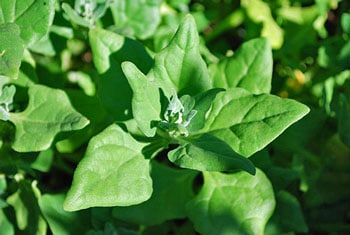
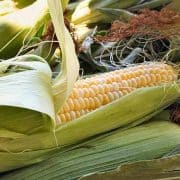
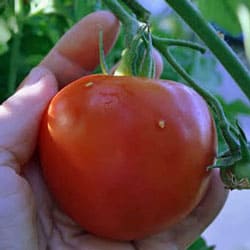
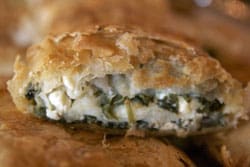
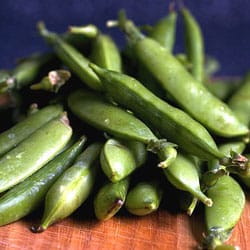
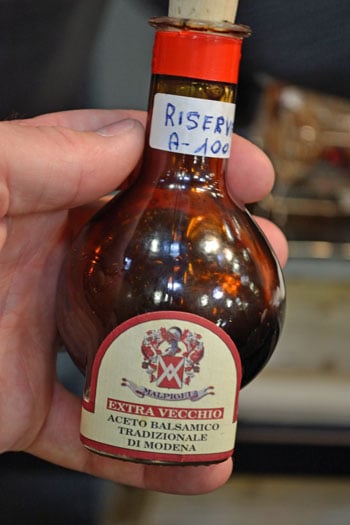
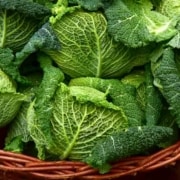 © 2024 Terroir Seeds | Underwood Gardens
© 2024 Terroir Seeds | Underwood Gardens
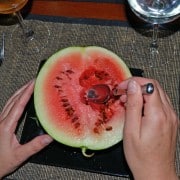
I was an avid gardner years ago and have grown herbs for the local farmers market. With painful arthritis I gave up a few years ago and moved from the farm into town. However after a few issues of your e-letter I am interested in starting another garden where my lawn is.
I am in Bali now but I will be back home mid April. If I can get some help with preparing a few beds,I will order my seeds at that time. Thanks for a wonderful newsletter
Teri
OK, I took a look at this, and I need to ask some clarification questions…
These 4 suggestions all seem to have some caveats. Need to cook ’em for 60 seconds. Need vinegar. My question is this: Can any of these be picked, thrown on a salad, eaten raw and truly enjoyed as a spinach summer substitute?
Seems like a maybe on the New Zealand and Red Aztec. What say you?
Thanks
I really enjoyed reading about alternatives to spinach. I got some Malabar spinach seeds from a friend and will plant them this spring.
Good to hear Steve! Let us know how you like them. Many folks will plant them along a garden fence so that they don’t take up too much space as they like to sprawl. The fence allows them to climb and you get to access them from both sides, getting a bigger harvest. Take a few leaves every few days and they will continue to grow new ones throughout the summer.
Rick, all of these can be eaten fresh out of hand, in a salad or on sandwiches. The suggestions are simply to encourage some creativity in using them beyond the table salad approach, which gets old to many people pretty quickly.
Well bless you Terry, you’ve made our day! Thank you so much for the kind words, we really appreciate that our Newsletter is useful and are humbled that you have found inspiration in it.